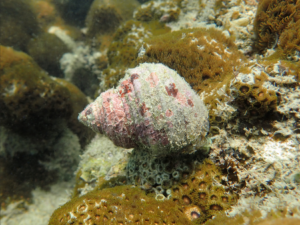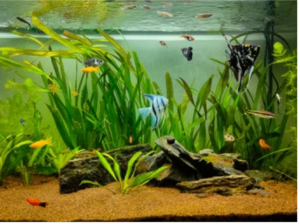Aquarists worldwide acknowledge the marvel of introducing diverse species into their tanks. Renowned for their intriguing appearance and beneficial roles, such as substrate aeration, Malaysian trumpet snails can soon become a problem due to their rapid reproductive rate. How, then, can you get rid of Malaysian trumpet snails once they become a nuisance?
To get rid of Malaysian trumpet snails, consider humane disposal methods like rehoming through aquarium clubs or online platforms. These snails reproduce rapidly via parthenogenesis and can’t survive long outside water, thus the need for effective control to maintain a balanced aquatic ecosystem.
This guide offers insights on why and how to effectively and humanely get rid of Malaysian Trumpet snails when their population gets out of hand.
Malaysian Trumpet Snail’s Reproductive Speed
Contrary to popular belief, Malaysian trumpet snails are not hermaphrodites. Their rapid breeding rate can be attributed to their unique reproductive capabilities. Not only can they conceive sexually, but they also can reproduce through a process known as parthenogenesis.
In parthenogenesis, a female egg evolves into an embryo without requiring male fertilization. Furthermore, these snails are livebearers, which means they do not lay eggs but give birth to live young.
While some snail populations can benefit tank health by consuming algae and detritus, a significant increase in Malaysian trumpet snails can lead to competition for resources, unsettling the equilibrium of the aquatic ecosystem.
This prolific reproduction is a core reason many aquarists seek ways to control or dispose of Malaysian trumpet snails.
Lifespan Outside of Water
Before diving into removal methods, it’s essential to understand the endurance of these snails outside their aquatic home. Despite common misconceptions, Malaysian trumpet snails and other aquarium snails cannot survive long outside of water. Their bodies dehydrate quickly. A snail might last only a few hours when taken out of their aquatic environment.
Although some snails might leave the water temporarily for food or to lay eggs, they always return promptly. Their survival hinges on them remaining moist.
This vulnerability underscores the need for effective and humane disposal methods to prevent them from facing undue distress or posing risks to other aquatic systems.
Inhumane Methods to Avoid
Aquarium forums and community discussions often suggest various methods to deal with overpopulated snails. However, not all are kind or environmentally sound.
Physical Crushing
A distressingly common recommendation is the physical crushing of snails, either within a Ziplock bag or by hand, followed by feeding them to fish. This method is unpleasant and can introduce potential pathogens or toxins into your aquarium, putting your fish at risk.
Leaving Snails Exposed
Another suggestion involves leaving the snails on driveways or other open areas where birds or other predators might consume them. While this might seem like a natural solution, it introduces the risk of the snails entering local water systems. Once there, these non-native species can wreak havoc on local ecosystems.
Rinse and Drain
Washing the snails down the drain might seem straightforward, but it’s fraught with ecological risks. There’s the potential for snails to survive and establish themselves in new environments, especially septic systems.
Moreover, introducing non-native species to new environments where they might have no natural predators can lead to unintended ecological consequences.
Freezing
Some aquarists suggest freezing the snails as a method of euthanization. While seemingly swift, it’s debated among experts about the ethics of this method. The slow decrease in temperature can prolong the distress of these creatures.
It’s evident that while many methods exist to dispose of Malaysian trumpet snails, it’s crucial to prioritize humane and environmentally friendly options. The balance of our delicate ecosystems and the well-being of even the smallest creatures should be paramount in our decisions.
Humane Methods for Removal and Disposal
Opting for a humane approach when deciding how to get rid of Malaysian Trumpet snails signifies an aquarist’s responsibility and care toward the environment. There are several ethical methods available that can ensure that snails are treated with respect while safeguarding the broader ecological system.
Local Aquarium Clubs & Online Platforms
The phrase “one person’s problem is another person’s solution” is especially pertinent when considering overpopulated snails in an aquarium setting. While you might be looking to reduce their numbers, other enthusiasts might be actively seeking them out.
Aquarium Clubs
Many cities or regions have local aquarium societies, such as:
- The Aquatic Gardeners Association (AGA): An organization dedicated to aquatic plants and their associated fauna. They often host auctions or swap meets where members can exchange species.
- The North American Native Fishes Association (NANFA): While their primary focus is on native fish, they also have a broad interest in all aquatic life, including snails.
- Local Chapters: Cities often have local aquarium clubs, like the Greater Seattle Aquarium Society (GSAS) or the San Francisco Bay Area Aquarium Plant Society. Look for clubs specific to your region.
Online Platforms
The digital age has seen a surge in online communities dedicated to aquarists:
- Facebook Groups: With a quick search, you can find numerous groups dedicated to aquariums, such as “Aquarium Addicts” or “Freshwater Aquariums & Fish Keeping.” These communities often have members looking to exchange or acquire specific species.
- Craigslist: This platform is frequently used by individuals looking to rehome or acquire aquatic species. The “Pets” or “Free” sections can be particularly useful.
- Aquatic Plant Central or PlantedTank.net: These forums have dedicated sections for sales, trades, or giveaways of aquatic plants and animals.
Contained Environments
Setting up small, contained environments, such as jars or balcony vessels, can provide a temporary solution. Adding duckweed or other floating plants allows these snails to be kept alive without causing an increase in their population.
While it might seem like postponing the problem, it offers a chance to find a more permanent solution without resorting to inhumane methods.
Humane Euthanization
Humane euthanization is an option for those looking to dispose of Malaysian trumpet snails without rehoming or containment.
- Clove oil: Known for its sedative properties in fish, clove oil can also be used for snails. However, caution is essential. If considering feeding the snails to other fish after euthanizing them with clove oil, ensure no residual oil remains, as it could harm the fish.
- Carbon dioxide poisoning: Introducing high levels of carbon dioxide into a closed environment with the snails can be a humane way of euthanizing them. However, this method requires careful monitoring to ensure it’s effective without causing prolonged distress.
- Ice bath: While not the most favored option, an ice bath can be a quicker alternative to freezing. By rapidly dropping the temperature, the snails’ metabolic processes slow down, leading to a swift and humane death.
Tank Drying and Freezing
A more systematic approach involves letting the tank dry out, collecting the snails, and then freezing the collected snails for several days. Given the tropical/subtropical nature of Malaysian trumpet snails, they have limited cold tolerance, making this method effective.
Conclusion
The decision to get rid of Malaysian trumpet snails requires careful consideration, not only for the well-being of the snails but also for the broader environment. Whether you opt for rehoming, containment, or humane euthanization, the responsibility lies in choosing a method that aligns with ecological and ethical principles.
Aquarists play a pivotal role in the delicate balance of aquatic ecosystems, and making informed, compassionate decisions strengthens this role. By ensuring that we treat even the smallest members of our tanks with respect and care, we reinforce a broader commitment to the well-being of all living creatures and the world we share with them.



